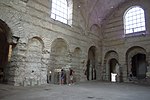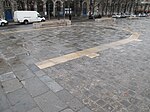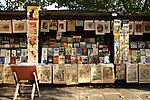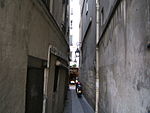Siege of Paris (885–886)

The siege of Paris of 885–886 was part of a Viking raid on the Seine, in the Kingdom of the West Franks. The siege was the most important event of the reign of Charles the Fat, and a turning point in the fortunes of the Carolingian dynasty and the history of France. It also proved for the Franks the strategic importance of Paris at a time when it also was one of the largest cities in West Francia. The siege is the subject of an eyewitness account in the Latin poem Bella Parisiacae urbis of Abbo Cernuus. With hundreds of ships, and possibly tens of thousands of men, the Vikings arrived outside Paris in late November 885, demanding tribute. This was denied by Odo, Count of Paris, despite the fact he could assemble only several hundred soldiers to defend the city. The Vikings attacked with a variety of siege engines but failed to break through the city walls despite days of intense attacks. The siege was maintained for months but without any significant assaults after the initial attack. As the siege continued, most of the Vikings left Paris to pillage further upriver. The Vikings made a final unsuccessful attempt to take the city during the summer. In October, Charles the Fat arrived with his army. To the frustration of the Parisians who had fought to defend the city, Charles stopped short of attacking the Viking invaders. Instead, he allowed them to sail further up the Seine to raid Burgundy (which was in revolt) and promised a payment of 700 livres (257 kg) of silver. Odo, highly critical of this, attempted to defy Charles' promises. When Charles died in 888, Odo was elected the first non-Carolingian king of the Franks.
Excerpt from the Wikipedia article Siege of Paris (885–886) (License: CC BY-SA 3.0, Authors, Images).Siege of Paris (885–886)
Parvis Notre-Dame - Place Jean-Paul II, Paris 4th Arrondissement (Paris)
Geographical coordinates (GPS) Address Nearby Places Show on map
Geographical coordinates (GPS)
| Latitude | Longitude |
|---|---|
| N 48.854 ° | E 2.347 ° |
Address
Préfecture de police
Parvis Notre-Dame - Place Jean-Paul II
75004 Paris, 4th Arrondissement (Paris)
Ile-de-France, France
Open on Google Maps









